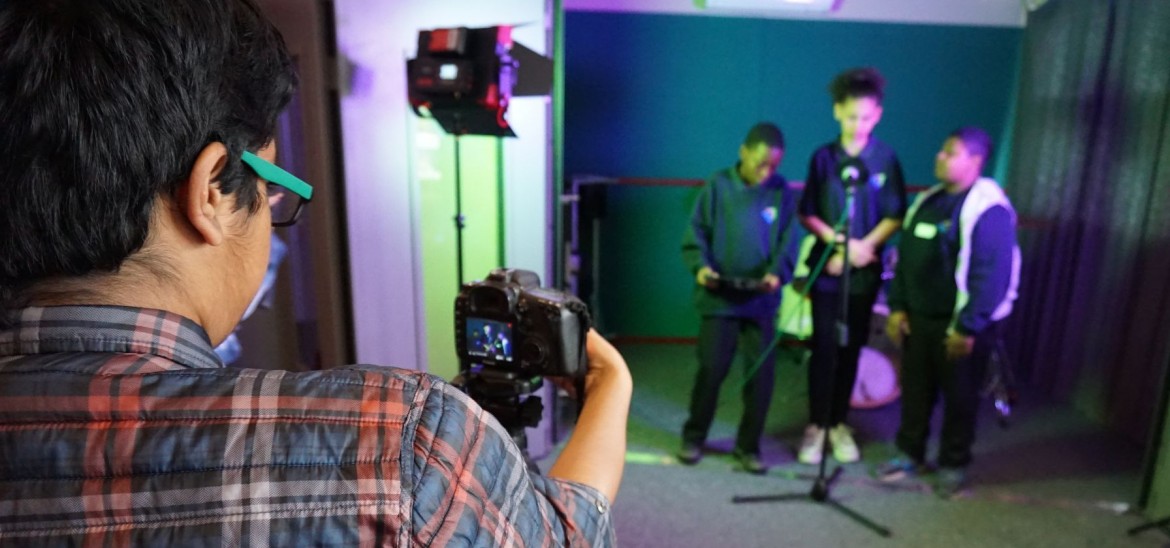Into Film Clubs
Find out everything you need to know about starting an Into Film Club.



From Black History Month to World Mental Health Day, October provides many essential educational opportunities for teachers. Chief among these is Attention Deficit Hyperactivity Disorder (ADHD) Awareness Month, a condition that is often both misused and misunderstood.
We are very proud to present a new research project on ADHD and filmmaking from Community Engagement and Communications freelancer and former Into Film employee, Katy Palmer. Check out her fascinating and inspiring testimony below on the six months she spent working in two of Newham's Pupil Referral Units (PRUs) where ADHD students proved to be exceptional filmmakers.
Our attention spans are shortening and as Jon Kabat-Zinn, the father of modern mindfulness diagnoses, "our entire society is suffering from attention deficit disorder big time." But when people throw out the phrase ‘they're a bit ADHD', they fail to understand what ADHD actually is and the superpowers that often come with it.
I discovered these ADHD superpowers over the past six months working in two of Newham's Pupil Referral Units (PRUs), where ADHD students proved to be exceptional filmmakers.
In the UK it's thought that 2-5% of school-aged children have ADHD. At Newham PRUs, the school's SENCO (Special Educational Needs Co-ordinator), Adam Tsui-Lucas estimates that approximately 15% of the PRU have ADHD, both diagnosed and undiagnosed. So what works to engage students with ADHD? One answer it transpires is film.
Let's meet Michael - when Michael's energy stops it's like a bouncy castle has been popped. He's at Newham PRUs because of poor concentration and defiance but I suspect it's also partly due to his mainstream school's inability to diagnose his ADHD and engage him in subjects where he can thrive.
Bringing in a camera seemed like a hopeful experiment for Michael's class, but I couldn't plan this video intervention alone. I contacted Into Film who supported me with an old ‘Take 5' filmmaking resource brilliantly suited to short attention spans as well as filmmaking social enterprise, Mediorite.
After they had all had a go filming each other, we asked Michael's class to come up with a storyboard using Into Film's templates. By day two, he's more organised. Day three and we've got ourselves a film. Planning his film about stolen trainers, I witness his journey from chaotic to calm, and above all creative.
Here's three reasons why video works with ADHD students like Michael:
It's easier to engage with bold imagery than a long paragraph, but video can also be a great route into writing. Storyboarding helps us sequence information image by image, linking visual descriptions to basic organisation. A Facebook executive predicted that the platform will be all video and no text by 2021 so thinking visually helps to build digital literacy too.
‘Take 5' asks students to spend 5 minutes thinking of their story and 5 minutes on the storyboard itself. Working with 5 people with 5 shots and 1 prop, the film can be anything from 5 seconds to 55 seconds. ADHD students stay engaged with 5 minute tasks as anything with an endpoint in sight keeps them motivated. Projecting a giant video of a stopwatch to show how long we have left, works to keep students on track.
Research supports the notion that people with ADHD characteristics are more likely to reach higher levels of creative thought than people without. For example, when we didn't have time to film with a real door, Michael was unfazed and creatively mimed an invisible front door opening.
When it comes to film education, let's embrace all the alternative ways of thinking that we find in alternative provision sites. If you teach, fund, or run opportunities for tomorrow's young filmmakers, keep alternative provision students firmly at the front of your mind.
If you're interested in the subject of ADHD, make sure to check out our Future Storytellers project and its corresponding resource from last year, which allowed students with ADHD to create animations alongside professional filmmakers.
Viewing 4 of 4 related items.

Find out more about our streaming service, designed specifically for UK schools.